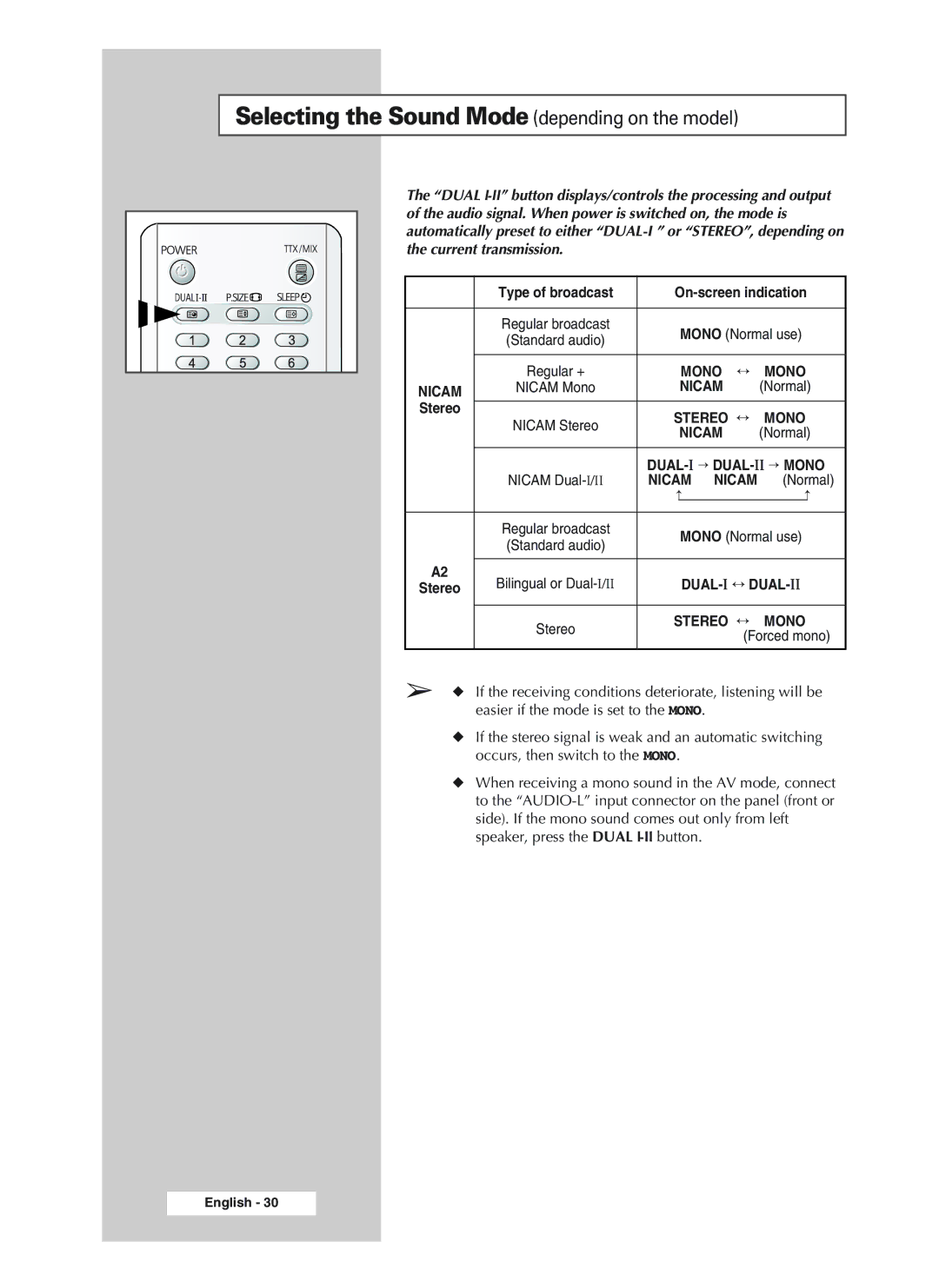
Selecting the Sound Mode (depending on the model)
The “DUAL
| Type of broadcast |
| |||
|
|
|
|
|
|
| Regular broadcast |
| MONO (Normal use) | ||
| (Standard audio) |
| |||
|
|
|
|
| |
|
|
|
|
|
|
| Regular + |
| MONO | ↔ MONO | |
NICAM | NICAM Mono |
| NICAM | (Normal) | |
Stereo | NICAM Stereo | STEREO ↔ MONO | |||
| |||||
|
| NICAM | (Normal) | ||
|
|
| |||
|
|
|
|
| |
|
|
| |||
| NICAM | NICAM NICAM (Normal) | |||
|
| → | → | ||
|
|
|
|
|
|
| Regular broadcast |
| MONO (Normal use) | ||
| (Standard audio) |
| |||
|
|
|
|
| |
A2 |
|
|
|
|
|
Bilingual or |
| ||||
Stereo |
| ||||
|
|
|
|
| |
| Stereo | STEREO ↔ MONO | |||
|
|
| (Forced mono) | ||
|
|
|
| ||
|
|
|
|
|
|
➢◆ If the receiving conditions deteriorate, listening will be easier if the mode is set to the MONO.
◆If the stereo signal is weak and an automatic switching occurs, then switch to the MONO.
◆When receiving a mono sound in the AV mode, connect to the
English - 30
